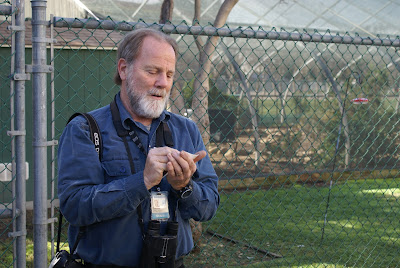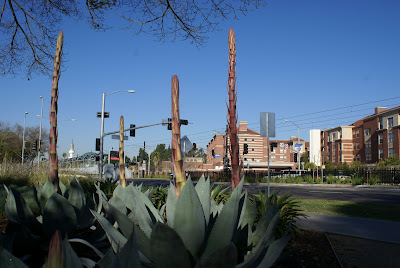Briana Burrows and Anna Holden
(looks like they really like collecting spiders too)
All told, we collected 17 spiders (not bad for a newly planted habitat) many of which were very small and non-descript – think tiny brown specks almost indistinguishable from a piece of dirt (did I mention these children have amazing eyesight?). However, there was one spider that stood out from the crowd. She was large, and yellow, and had oh such lovely legs! Let me introduce you to the Whitebanded Crab Spider, Misumenoides formosipes (her species name is derived from the Latin formosus = beautiful and pes = foot or leg).
Female Whitebanded Crab Spider
The beautiful specimen we found on Sunday was a female. The sexes are very easy to distinguish as the males are a lot smaller and much less rotund. She was collected on the bright yellow, sunflower-like flowers of Encelia californica, commonly known as bush sunflower. Next time you are in the North Campus, check out the bush sunflowers planted atop the living wall. Who knew so much drama could be unfolding on each and every flower?
Crab spider versus European Honey Bee
(It was a tie, the honey bee flew away)














